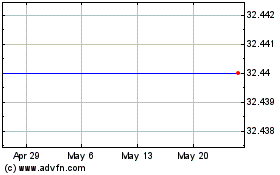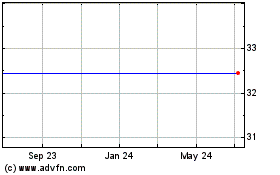Some Student Lenders See New Opportunity In Federal Loans
May 12 2010 - 3:58PM
Dow Jones News
New legislation aimed at bringing portions of the federal
government's student-loan program back under Uncle Sam's top hat is
presenting a growth opportunity for the largest lenders, while
smaller players may see only the exit sign.
In March, the government said it would move federal student-loan
originations--a $72.7 billion business--in-house starting this
summer, eliminating billions of subsidy dollars for companies that
had been originating the loans on its behalf. Unable to book fees
on new loans, many small lenders whose only business was federal
lending see the legislation as a big blow.
However, four organizations that have landed government
servicing contracts--SLM Corp. (SLM), also known as Sallie Mae,
Nelnet Inc. (NNI) and the non-profits Great Lakes Educational Loan
Services Inc. and American Education Services/Pennsylvania Higher
Education Assistance Agency--see an opportunity: buying the loans
of smaller peers that could be pushed out of the federally
guaranteed loan market.
"Those four servicers have scale to grow," said Matt Snowling,
analyst at FBR Capital Markets. "Everyone else is in runoff," he
said of companies whose existing portfolios will only shrink.
Sallie Mae, created as a government-sponsored enterprise in the
vein of mortgage giants Fannie Mae (FNM) and Freddie Mac (FRE), was
privatized in 2004 but remains by far the largest originator of
federally guaranteed loans. That company, along with Nelnet,
Citigroup Inc. (C), Wells Fargo & Co. (WFC) and others, made
money from issuing and servicing the loans backed by the
government, which for years didn't want the hassle of overseeing
the program. But under a recent cost-cutting initiative, the
Department of Education took charge of the loans, eliminating the
fees given to middlemen. Four lenders will still be paid for
servicing the loans, but they will no longer make money off
originations.
It's unclear exactly how many loans would be available for
purchase, as not all companies have decided whether to keep their
federal portfolios. Some analysts say as much as $100 billion of
FFELP loans may ultimately be for sale.
Mark Kantrowitz, publisher of financial-aid website FinAid, said
the smallest lenders "will either sell their portfolios to exit the
business, outsource the servicing or buy other lenders' loan
portfolios; less than a dozen will survive."
Sallie Mae, which in the first quarter originated $7.7 billion
in FFELP loans, also bought $1.5 billion of federal loans from
other lenders during that period. Vice Chairman and Chief Financial
Officer Jack Remondi said in a call with analysts that the company
is "eager" to buy loan portfolios or take on servicing
responsibilities for those lenders that want to keep their
portfolios.
"We'll have to wait and see what will come about, but we're very
confident that we should see some good opportunities in the space,"
Remondi said on the call.
Nelnet is also taking advantage of the new legislation's effect
on smaller players, announcing Monday that it had bought $2 billion
of FFELP loans since April 1, including $1.5 billion from Colorado
non-profit lender CollegeInvest. CollegeInvest said its student
loan business is in "wind-down mode," but its 529 college savings
plan and some other operations will remain.
"We have and will continue to look for opportunities to add to
our portfolio," Nelnet President Jeffrey Noordhoek said in a call
with analysts Tuesday. "Our systems have the capacity for
growth."
Sallie Mae and Nelnet wouldn't comment on the prices they paid
for the new portfolios, though Nelnet said they were "attractive"
and the acquisitions will add to earnings immediately. Analysts
believe the purchases were made at a slight discount to par
value.
Sallie Mae has been vocal about how damaging the new law will be
to its business, saying it will lay off nearly a third of its work
force as a result of the program upheaval. It, and Nelnet, are
diversifying as they settle onto the new student-loan playing
field.
-By Melissa Korn, Dow Jones Newswires; 212-416-2271;
melissa.korn@dowjones.com
Student Loan (NYSE:STU)
Historical Stock Chart
From Mar 2024 to Apr 2024

Student Loan (NYSE:STU)
Historical Stock Chart
From Apr 2023 to Apr 2024
